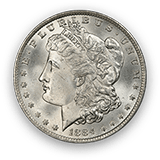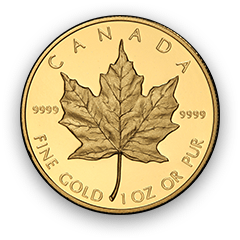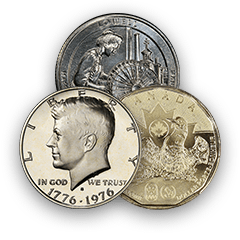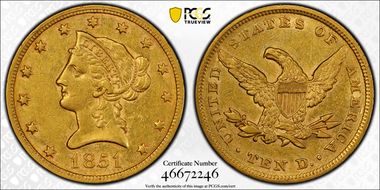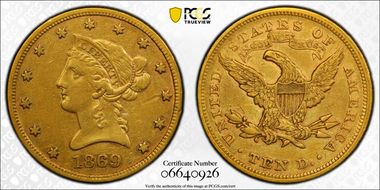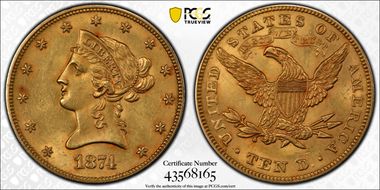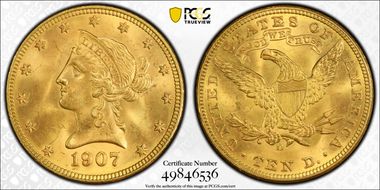hykyrone Coin Album
Rarity 17th of 21 per Douglas Winter's "Gold Coins of the New Orleans Mint 1839-1909". Variety 2 (2-A), Obverse - the 1 in the date is equidistant between truncation and dentils, 3 closer to dentils than truncation. Reverse - Mintmark positioned over left side of N in TEN.
Rarity 17th of 21 per Douglas Winter's "Gold Coins of the New Orleans Mint 1839-1909". Variety 2 (2-A), Obverse - the 1 in the date is equidistant between truncation and dentils, 3 closer to dentils than truncation. Reverse - Mintmark positioned over left side of N in TEN.
Rarity 17th of 21 per Douglas Winter's "Gold Coins of the New Orleans Mint 1839-1909". Variety 2 (2-A), Obverse - the 1 in the date is equidistant between truncation and dentils, 3 closer to dentils than truncation. Reverse - Mintmark positioned over left side of N in TEN.
Rarity 17th of 21 per Douglas Winter's "Gold Coins of the New Orleans Mint 1839-1909". Variety 2 (2-A), Obverse - the 1 in the date is equidistant between truncation and dentils, 3 closer to dentils than truncation. Reverse - Mintmark positioned over left side of N in TEN.
Per David Akers' "United States Gold Coins - An Analysis Of Auction Records - Volume V - Eagles 1795-1933" (1980), This date is just one of the many grossly underrated dates in the Liberty Head Eagle series. It is very rare and difficult to obtain in any condition and, when located, VF or EF is about all one can expect." Garrett and Guth's "Encyclopedia Of U.S. Gold Coins 1795-1933" (2008) maintains, "The 1845 eagle is a great, low-mintage date whose rarity has withstood the test of time. Certainly, it is not as rare as the 1844, but it compares favorably with the 1846 and 1849-O. The vast majority of 1845 eagles are in circulated condition, mostly EF or worse, rarely in AU, and almost never in Mint State." Q. David Bowers' "Official Red Book - A Guide To Gold Eagle Coins" (2017) states, "As is true of all other eagles of this era, VF and EF are par for grades usually seen, with VF predominating."
Per David Akers' "United States Gold Coins - An Analysis Of Auction Records - Volume V - Eagles 1795-1933" (1980), This date is just one of the many grossly underrated dates in the Liberty Head Eagle series. It is very rare and difficult to obtain in any condition and, when located, VF or EF is about all one can expect." Garrett and Guth's "Encyclopedia Of U.S. Gold Coins 1795-1933" (2008) maintains, "The 1845 eagle is a great, low-mintage date whose rarity has withstood the test of time. Certainly, it is not as rare as the 1844, but it compares favorably with the 1846 and 1849-O. The vast majority of 1845 eagles are in circulated condition, mostly EF or worse, rarely in AU, and almost never in Mint State." Q. David Bowers' "Official Red Book - A Guide To Gold Eagle Coins" (2017) states, "As is true of all other eagles of this era, VF and EF are par for grades usually seen, with VF predominating."
Per David Akers' "United States Gold Coins - An Analysis Of Auction Records - Volume V - Eagles 1795-1933" (1980), This date is just one of the many grossly underrated dates in the Liberty Head Eagle series. It is very rare and difficult to obtain in any condition and, when located, VF or EF is about all one can expect." Garrett and Guth's "Encyclopedia Of U.S. Gold Coins 1795-1933" (2008) maintains, "The 1845 eagle is a great, low-mintage date whose rarity has withstood the test of time. Certainly, it is not as rare as the 1844, but it compares favorably with the 1846 and 1849-O. The vast majority of 1845 eagles are in circulated condition, mostly EF or worse, rarely in AU, and almost never in Mint State." Q. David Bowers' "Official Red Book - A Guide To Gold Eagle Coins" (2017) states, "As is true of all other eagles of this era, VF and EF are par for grades usually seen, with VF predominating."
Per David Akers' "United States Gold Coins - An Analysis Of Auction Records - Volume V - Eagles 1795-1933" (1980), This date is just one of the many grossly underrated dates in the Liberty Head Eagle series. It is very rare and difficult to obtain in any condition and, when located, VF or EF is about all one can expect." Garrett and Guth's "Encyclopedia Of U.S. Gold Coins 1795-1933" (2008) maintains, "The 1845 eagle is a great, low-mintage date whose rarity has withstood the test of time. Certainly, it is not as rare as the 1844, but it compares favorably with the 1846 and 1849-O. The vast majority of 1845 eagles are in circulated condition, mostly EF or worse, rarely in AU, and almost never in Mint State." Q. David Bowers' "Official Red Book - A Guide To Gold Eagle Coins" (2017) states, "As is true of all other eagles of this era, VF and EF are par for grades usually seen, with VF predominating."
Garrett and Guth's "Encyclopedia of U.S. Gold Coins 1795-1933" states, "The 1848 eagle has one of the highest mintages of the No Motto type, yet it is surprisingly scarce relative to how many were made. Most examples are well circulated, but AU examples are scarce and Mint State pieces are rare... This date is known for the depth and frostiness of the luster." Q. David Bowers' "Red Book" - "A Guide Book of Gold Eagle Coins" under the heading "Key to collecting" states, "VF and EF grades are those usually seen, but AU specimens appear on the market with some frequency. Mint State coins are few and far between. Patience is required to find a nice one." He also states that the "Estimated population (Mint State): 20-25. Very scarce. Usually in lower grades, MS-60 to MS-62." David Akers' "United States Gold Coins - An Analysis of Auction Records - Volume V - 1795-1933" comments, "The 1848 is another rare and underrated date although it is neither as rare nor as underrated as the 1845 and 1846. Most known specimens are only VF or XF and strictly uncirculated examples are extremely rare. Specimens that grade a full AU are also seldom available. As a date, the 1848 is far more rare than the 1847, 1847-O and the 1849 and is comparable in overall rarity to the 1842-O and the 1844-O." While PCGS Coinfacts indicates an MS60 and better population of 8, PCGS and NGC have graded more than 40 pieces MS60 or better. It is unclear if the discrepancy is due to numerous resubmissions or just a typographical error.
Garrett and Guth's "Encyclopedia of U.S. Gold Coins 1795-1933" states, "The 1848 eagle has one of the highest mintages of the No Motto type, yet it is surprisingly scarce relative to how many were made. Most examples are well circulated, but AU examples are scarce and Mint State pieces are rare... This date is known for the depth and frostiness of the luster." Q. David Bowers' "Red Book" - "A Guide Book of Gold Eagle Coins" under the heading "Key to collecting" states, "VF and EF grades are those usually seen, but AU specimens appear on the market with some frequency. Mint State coins are few and far between. Patience is required to find a nice one." He also states that the "Estimated population (Mint State): 20-25. Very scarce. Usually in lower grades, MS-60 to MS-62." David Akers' "United States Gold Coins - An Analysis of Auction Records - Volume V - 1795-1933" comments, "The 1848 is another rare and underrated date although it is neither as rare nor as underrated as the 1845 and 1846. Most known specimens are only VF or XF and strictly uncirculated examples are extremely rare. Specimens that grade a full AU are also seldom available. As a date, the 1848 is far more rare than the 1847, 1847-O and the 1849 and is comparable in overall rarity to the 1842-O and the 1844-O." While PCGS Coinfacts indicates an MS60 and better population of 8, PCGS and NGC have graded more than 40 pieces MS60 or better. It is unclear if the discrepancy is due to numerous resubmissions or just a typographical error.
Garrett and Guth's "Encyclopedia of U.S. Gold Coins 1795-1933" states, "The 1848 eagle has one of the highest mintages of the No Motto type, yet it is surprisingly scarce relative to how many were made. Most examples are well circulated, but AU examples are scarce and Mint State pieces are rare... This date is known for the depth and frostiness of the luster." Q. David Bowers' "Red Book" - "A Guide Book of Gold Eagle Coins" under the heading "Key to collecting" states, "VF and EF grades are those usually seen, but AU specimens appear on the market with some frequency. Mint State coins are few and far between. Patience is required to find a nice one." He also states that the "Estimated population (Mint State): 20-25. Very scarce. Usually in lower grades, MS-60 to MS-62." David Akers' "United States Gold Coins - An Analysis of Auction Records - Volume V - 1795-1933" comments, "The 1848 is another rare and underrated date although it is neither as rare nor as underrated as the 1845 and 1846. Most known specimens are only VF or XF and strictly uncirculated examples are extremely rare. Specimens that grade a full AU are also seldom available. As a date, the 1848 is far more rare than the 1847, 1847-O and the 1849 and is comparable in overall rarity to the 1842-O and the 1844-O." While PCGS Coinfacts indicates an MS60 and better population of 8, PCGS and NGC have graded more than 40 pieces MS60 or better. It is unclear if the discrepancy is due to numerous resubmissions or just a typographical error.
Garrett and Guth in their "Encyclopedia of U.S. Gold Coins" states, "The 1851 eagle might appear to be a common coin at first glance, but it is much scarcer than the mintage indicates. It is comparable in rarity to the 1848 and 1854, but much scarcer than the 1841, 1844-O, 1847, 1847-O, 1849, 1851-O and 1852 (to name a few). Circulated examples are available up through AU50, after which the rarity increases dramatically." Q. David Bowers' "Red Book" for gold eagles suggests that between 1200 and 1500 1851 eagles exist, however this seems like an inflated number or a typo (200-500 seems to be a more accurate number). To date only 550 1851 eagles have been graded by PCGS (215) and NGC (335) and that number includes resubmissions. The PCGS CoinFacts suggests a total population of only 225 exist in all grades and Garrett and Guth list a "graded" population figure of 393 (2008). David Akers auction analysis states, "This date is rare and underrated in all grades"
Garrett and Guth in their "Encyclopedia of U.S. Gold Coins" states, "The 1851 eagle might appear to be a common coin at first glance, but it is much scarcer than the mintage indicates. It is comparable in rarity to the 1848 and 1854, but much scarcer than the 1841, 1844-O, 1847, 1847-O, 1849, 1851-O and 1852 (to name a few). Circulated examples are available up through AU50, after which the rarity increases dramatically." Q. David Bowers' "Red Book" for gold eagles suggests that between 1200 and 1500 1851 eagles exist, however this seems like an inflated number or a typo (200-500 seems to be a more accurate number). To date only 550 1851 eagles have been graded by PCGS (215) and NGC (335) and that number includes resubmissions. The PCGS CoinFacts suggests a total population of only 225 exist in all grades and Garrett and Guth list a "graded" population figure of 393 (2008). David Akers auction analysis states, "This date is rare and underrated in all grades"
Garrett and Guth in their "Encyclopedia of U.S. Gold Coins" states, "The 1851 eagle might appear to be a common coin at first glance, but it is much scarcer than the mintage indicates. It is comparable in rarity to the 1848 and 1854, but much scarcer than the 1841, 1844-O, 1847, 1847-O, 1849, 1851-O and 1852 (to name a few). Circulated examples are available up through AU50, after which the rarity increases dramatically." Q. David Bowers' "Red Book" for gold eagles suggests that between 1200 and 1500 1851 eagles exist, however this seems like an inflated number or a typo (200-500 seems to be a more accurate number). To date only 550 1851 eagles have been graded by PCGS (215) and NGC (335) and that number includes resubmissions. The PCGS CoinFacts suggests a total population of only 225 exist in all grades and Garrett and Guth list a "graded" population figure of 393 (2008). David Akers auction analysis states, "This date is rare and underrated in all grades"
Garrett and Guth's "Encyclopedia of U.S. Gold Coins 1795-1933", states, "In 1857, the production of eagles at the Philadelphia Mint suffered a dramatic reduction to levels not seen since before 1845. Although a fair number of these coins survived, they circulated heavily, which means that most collectors are forced to accept VF and EF examples. About Uncirculated examples can be obtained at the AU50 level, but anything nicer is a real rarity, and in Mint State, this date is extremely rare." David Aker's Auction Analysis Volume V, suggests, "The 1857 is a very rare and underrated date. It is not often available in any condition and when offered for sale, VF or EF is the grade. A small number of AU examples are known but I have seen only two strictly uncirculated pieces and neither one was choice. In terms of overall rarity, the 1857 is similar to the 1851 and 1854, but it is even more difficult to obtain in high grade." Q. David Bowers' "Red Book" - "A Guide Book of Gold Eagles Coins" concludes under the heading "Keys to collecting": VF and EF are typical grades encountered. Scarce in all grades. AU coins are somewhat scarce."
Garrett and Guth's "Encyclopedia of U.S. Gold Coins 1795-1933", states, "In 1857, the production of eagles at the Philadelphia Mint suffered a dramatic reduction to levels not seen since before 1845. Although a fair number of these coins survived, they circulated heavily, which means that most collectors are forced to accept VF and EF examples. About Uncirculated examples can be obtained at the AU50 level, but anything nicer is a real rarity, and in Mint State, this date is extremely rare." David Aker's Auction Analysis Volume V, suggests, "The 1857 is a very rare and underrated date. It is not often available in any condition and when offered for sale, VF or EF is the grade. A small number of AU examples are known but I have seen only two strictly uncirculated pieces and neither one was choice. In terms of overall rarity, the 1857 is similar to the 1851 and 1854, but it is even more difficult to obtain in high grade." Q. David Bowers' "Red Book" - "A Guide Book of Gold Eagles Coins" concludes under the heading "Keys to collecting": VF and EF are typical grades encountered. Scarce in all grades. AU coins are somewhat scarce."
Only 16 graded higher by PCGS/NGC (including resubmissions) "...Mint State examples are obtainable but they remain scarce. Above MS61, this date becomes very rare and tops out at the MS65 level." per Garrett and Guth's "Encyclopedia Of U.S. Gold Coins 1795-1933". Breen's "Complete Encyclopedia Of U.S. and Colonial Coins" considers the 1874 Gold Eagle as "Rare... Ex. rare above EF." Q. David Bowers' more recent (2017) Red Book "A Guide Book Of Gold Eagle Coins" echoes the rarity of Mint State 1874 Eagles above MS62, showing "Submissions certified at highest grades (as of March 2017)" by PCGS and NGC at 14 total.
Only 16 graded higher by PCGS/NGC (including resubmissions) "...Mint State examples are obtainable but they remain scarce. Above MS61, this date becomes very rare and tops out at the MS65 level." per Garrett and Guth's "Encyclopedia Of U.S. Gold Coins 1795-1933". Breen's "Complete Encyclopedia Of U.S. and Colonial Coins" considers the 1874 Gold Eagle as "Rare... Ex. rare above EF." Q. David Bowers' more recent (2017) Red Book "A Guide Book Of Gold Eagle Coins" echoes the rarity of Mint State 1874 Eagles above MS62, showing "Submissions certified at highest grades (as of March 2017)" by PCGS and NGC at 14 total.
Only 16 graded higher by PCGS/NGC (including resubmissions) "...Mint State examples are obtainable but they remain scarce. Above MS61, this date becomes very rare and tops out at the MS65 level." per Garrett and Guth's "Encyclopedia Of U.S. Gold Coins 1795-1933". Breen's "Complete Encyclopedia Of U.S. and Colonial Coins" considers the 1874 Gold Eagle as "Rare... Ex. rare above EF." Q. David Bowers' more recent (2017) Red Book "A Guide Book Of Gold Eagle Coins" echoes the rarity of Mint State 1874 Eagles above MS62, showing "Submissions certified at highest grades (as of March 2017)" by PCGS and NGC at 14 total.
Garrett and Guth's "Encyclopedia of U.S. Gold Coins 1795-1933" states, "The 1876-S eagle is difficult to obtain in any grade and is an extremely popular date because of the low mintage (tied for second lowest at the San Francisco Mint). Most of the certified examples fall into the Extremely Fine and About Uncirculated categories, with none graded at the Mint State level." Walter Breen's "Complete Encyclopedia of U.S. and Colonial Coins" identifies the 1876-S eagle as "Very Rare". His book was published in 1987, probably before some repatriations which may have increased the known examples. Likewise, David Aker's Auction Analysis "Volume V - Eagles 1795-1933" (published in 1980) comments, "The mintage of the 1876-S is the second lowest from the San Francisco Mint (tied with the 1860-S) and so it comes as no surprise that this date is very rare in any condition... In terms of condition rarity, the 1876-S is near the top of the series, ranking in the top 10% of all $10 issues. The typical grade for this very rare date is VF and there are more that grade below VF than above it." His Average Grade at the time was VF24.
Garrett and Guth's "Encyclopedia of U.S. Gold Coins 1795-1933" states, "The 1876-S eagle is difficult to obtain in any grade and is an extremely popular date because of the low mintage (tied for second lowest at the San Francisco Mint). Most of the certified examples fall into the Extremely Fine and About Uncirculated categories, with none graded at the Mint State level." Walter Breen's "Complete Encyclopedia of U.S. and Colonial Coins" identifies the 1876-S eagle as "Very Rare". His book was published in 1987, probably before some repatriations which may have increased the known examples. Likewise, David Aker's Auction Analysis "Volume V - Eagles 1795-1933" (published in 1980) comments, "The mintage of the 1876-S is the second lowest from the San Francisco Mint (tied with the 1860-S) and so it comes as no surprise that this date is very rare in any condition... In terms of condition rarity, the 1876-S is near the top of the series, ranking in the top 10% of all $10 issues. The typical grade for this very rare date is VF and there are more that grade below VF than above it." His Average Grade at the time was VF24.
Garrett and Guth's "Encyclopedia of U.S. Gold Coins 1795-1933" states, "The 1876-S eagle is difficult to obtain in any grade and is an extremely popular date because of the low mintage (tied for second lowest at the San Francisco Mint). Most of the certified examples fall into the Extremely Fine and About Uncirculated categories, with none graded at the Mint State level." Walter Breen's "Complete Encyclopedia of U.S. and Colonial Coins" identifies the 1876-S eagle as "Very Rare". His book was published in 1987, probably before some repatriations which may have increased the known examples. Likewise, David Aker's Auction Analysis "Volume V - Eagles 1795-1933" (published in 1980) comments, "The mintage of the 1876-S is the second lowest from the San Francisco Mint (tied with the 1860-S) and so it comes as no surprise that this date is very rare in any condition... In terms of condition rarity, the 1876-S is near the top of the series, ranking in the top 10% of all $10 issues. The typical grade for this very rare date is VF and there are more that grade below VF than above it." His Average Grade at the time was VF24.
Garrett and Guth's "Encyclopedia of U.S. Gold Coins 1795-1933" states, "The 1876-S eagle is difficult to obtain in any grade and is an extremely popular date because of the low mintage (tied for second lowest at the San Francisco Mint). Most of the certified examples fall into the Extremely Fine and About Uncirculated categories, with none graded at the Mint State level." Walter Breen's "Complete Encyclopedia of U.S. and Colonial Coins" identifies the 1876-S eagle as "Very Rare". His book was published in 1987, probably before some repatriations which may have increased the known examples. Likewise, David Aker's Auction Analysis "Volume V - Eagles 1795-1933" (published in 1980) comments, "The mintage of the 1876-S is the second lowest from the San Francisco Mint (tied with the 1860-S) and so it comes as no surprise that this date is very rare in any condition... In terms of condition rarity, the 1876-S is near the top of the series, ranking in the top 10% of all $10 issues. The typical grade for this very rare date is VF and there are more that grade below VF than above it." His Average Grade at the time was VF24.
Only 2 graded higher by PCGS, NGC and ANACS; (1) PCGS MS64+, (1) NGC MS65
Only 2 graded higher by PCGS, NGC and ANACS; (1) PCGS MS64+, (1) NGC MS65
According to Garrett and Guth in their "Encyclopedia of U.S. Gold Coins", "The 1907-D eagle represents a classic example of why mintage figures should be discounted when determining rarity. In this case, the mintage of more than one million pieces makes the 1907-D eagle appear common, when it is really a semi-scarce date. Most Mint State examples are at the low end of the scale, making the search for high-grade examples even more difficult. In fact, the finest certified examples are a mere six MS65 pieces certified by NGC." Likewise, David Aker's "United States Gold Coins - An Analysis of Auction Record - Volume V - Eagles 1795-1933" states, "I am sure that most collectors, looking only at the mintage figures, assume that the 1907-D is at least as common as the 1906-D. This is not at all the case, however, as the auction data clearly shows. The 1907-D is two to three times as rare as the 1906-D and that ratio is probably low when comparing gem quality specimens since gems of the 1907-D are very scarce and similar quality examples of the 1906-D are quite common. This date does not deserve its "common date" status and I consider it to be an underrated issue." Aker's average grade for the 1907-D eagle is EF46." Q. David Bowers' "Red Book" - "A Guide Book of Gold Eagle Coins" echos the above, with "Most are MS-60 to MS-63, with MS-64 being scarce and anything higher being especially elusive."
According to Garrett and Guth in their "Encyclopedia of U.S. Gold Coins", "The 1907-D eagle represents a classic example of why mintage figures should be discounted when determining rarity. In this case, the mintage of more than one million pieces makes the 1907-D eagle appear common, when it is really a semi-scarce date. Most Mint State examples are at the low end of the scale, making the search for high-grade examples even more difficult. In fact, the finest certified examples are a mere six MS65 pieces certified by NGC." Likewise, David Aker's "United States Gold Coins - An Analysis of Auction Record - Volume V - Eagles 1795-1933" states, "I am sure that most collectors, looking only at the mintage figures, assume that the 1907-D is at least as common as the 1906-D. This is not at all the case, however, as the auction data clearly shows. The 1907-D is two to three times as rare as the 1906-D and that ratio is probably low when comparing gem quality specimens since gems of the 1907-D are very scarce and similar quality examples of the 1906-D are quite common. This date does not deserve its "common date" status and I consider it to be an underrated issue." Aker's average grade for the 1907-D eagle is EF46." Q. David Bowers' "Red Book" - "A Guide Book of Gold Eagle Coins" echos the above, with "Most are MS-60 to MS-63, with MS-64 being scarce and anything higher being especially elusive."
According to Garrett and Guth in their "Encyclopedia of U.S. Gold Coins", "The 1907-D eagle represents a classic example of why mintage figures should be discounted when determining rarity. In this case, the mintage of more than one million pieces makes the 1907-D eagle appear common, when it is really a semi-scarce date. Most Mint State examples are at the low end of the scale, making the search for high-grade examples even more difficult. In fact, the finest certified examples are a mere six MS65 pieces certified by NGC." Likewise, David Aker's "United States Gold Coins - An Analysis of Auction Record - Volume V - Eagles 1795-1933" states, "I am sure that most collectors, looking only at the mintage figures, assume that the 1907-D is at least as common as the 1906-D. This is not at all the case, however, as the auction data clearly shows. The 1907-D is two to three times as rare as the 1906-D and that ratio is probably low when comparing gem quality specimens since gems of the 1907-D are very scarce and similar quality examples of the 1906-D are quite common. This date does not deserve its "common date" status and I consider it to be an underrated issue." Aker's average grade for the 1907-D eagle is EF46." Q. David Bowers' "Red Book" - "A Guide Book of Gold Eagle Coins" echos the above, with "Most are MS-60 to MS-63, with MS-64 being scarce and anything higher being especially elusive."
